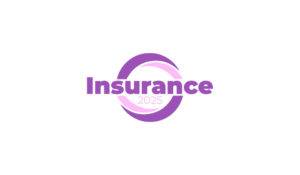5. How to choose an insurance provider
Choosing an insurance provider can be a daunting task. There are many insurance companies out there, each with its own set of policies, coverage options, and pricing. Here are some factors to consider when choosing an insurance provider:
1. Reputation – Look for an insurance provider with a good reputation. Read online reviews, ask for referrals, and research the company’s history.
2. Coverage options – Choose an insurance provider that offers the coverage options you need. Consider the risks your business faces and select a policy that covers those risks.
3. Pricing – Shop around for the best price. Get quotes from multiple insurance providers and compare the coverage and pricing offered.
4. Customer service – Look for an insurance provider with excellent customer service. You want to work with a company that is responsive and helpful when you need to file a claim or have questions.
5. Financial stability – Choose an insurance provider that is financially stable. Look for a company that has strong financial ratings from independent rating agencies.
6. Experience – Choose an insurance provider with experience in your industry. They will be better equipped to understand the unique risks your business faces and provide appropriate coverage.
By considering these factors, you can choose an insurance provider that offers the right coverage at a fair price and provides excellent customer service.
6. Important terms to know in business insurance policies
Before purchasing any business insurance policy, it’s important to understand the different terms and coverage options available. Here are some important terms to know:
1. Premium: This is the amount you pay for your insurance coverage.
2. Deductible: This is the amount you pay out of pocket before your insurance coverage kicks in. For example, if you have a $1,000 deductible and you file a claim for $5,000, you will pay the first $1,000 and your insurance will cover the remaining $4,000.
3. Liability coverage: This type of coverage protects your business in case you are found legally responsible for causing harm to another person or their property. For example, if a customer slips and falls in your store and sues you, liability coverage would help cover the legal costs and damages.
4. Property coverage: This type of coverage protects your business property, such as your building, inventory, and equipment. It can cover damages from events such as fire, theft, and vandalism.
5. Business interruption coverage: This type of coverage helps cover lost income and expenses if your business is forced to shut down temporarily due to a covered event, such as a natural disaster.
6. Workers’ compensation: This type of coverage is required in most states and provides benefits to employees who are injured on the job.
Understanding these terms and coverage options can help you make informed decisions when purchasing business insurance. It’s important to work with a reputable insurance agent or broker who can help guide you through the process and ensure that your business is adequately protected.
7. Tips for saving money on business insurance
Business insurance is essential to protect your company and cover any unexpected events that may occur. However, it can also be quite expensive, especially for small businesses with limited budgets. Here are some tips for saving money on business insurance:
1. Shop around – Insurance companies have different rates, so it’s important to get quotes from multiple providers to compare and find the best deal for your business.
2. Bundle policies – Many insurance companies offer discounts if you bundle multiple types of insurance together. For example, you could bundle your general liability and property insurance policies.
3. Increase deductibles – A deductible is the amount you pay out of pocket before your insurance kicks in. By increasing your deductible, you can lower your monthly premiums.
4. Improve safety measures – Insurance companies may give you a discount if you have safety measures in place, such as security cameras or fire alarms.
5. Review policies regularly – As your business grows or changes, your insurance needs may also change. Reviewing your policies regularly can ensure you are not paying for coverage you no longer need.
By following these tips, you can save money on your business insurance while still protecting your company from potential risks.

